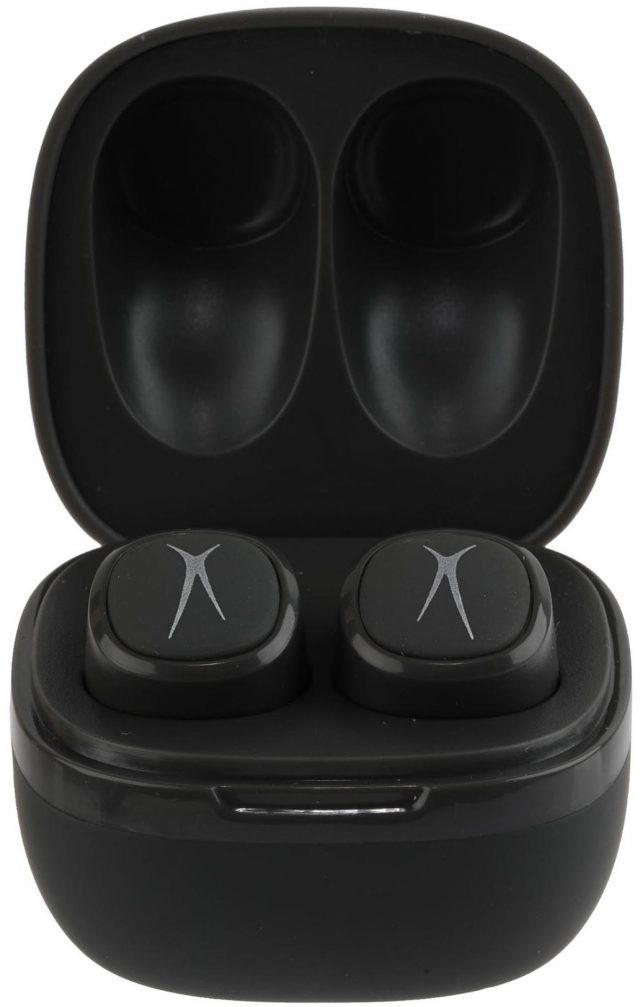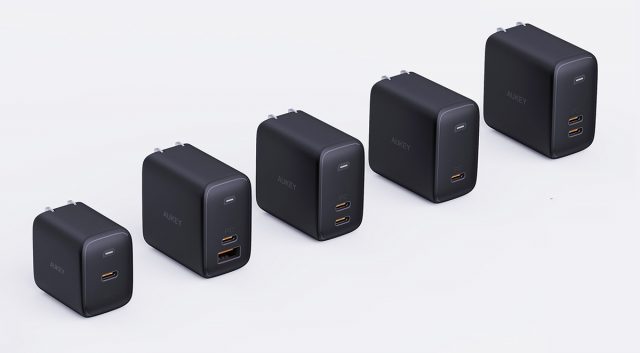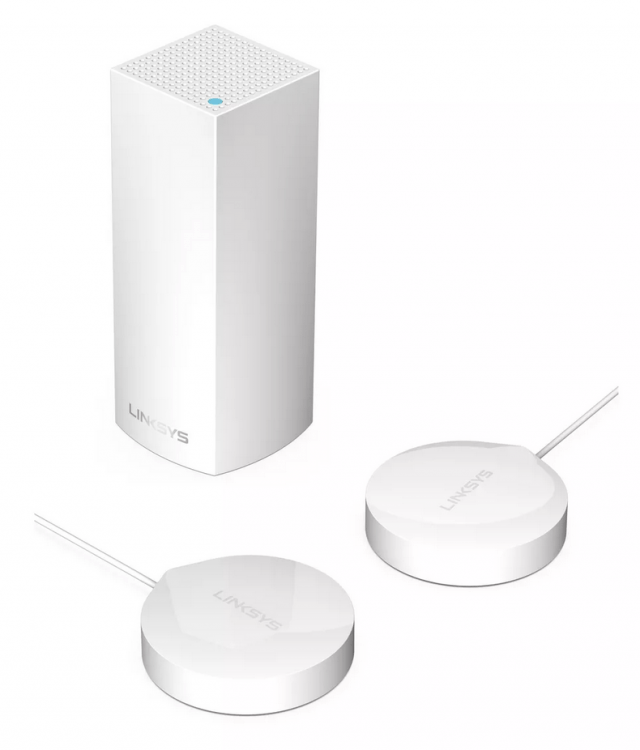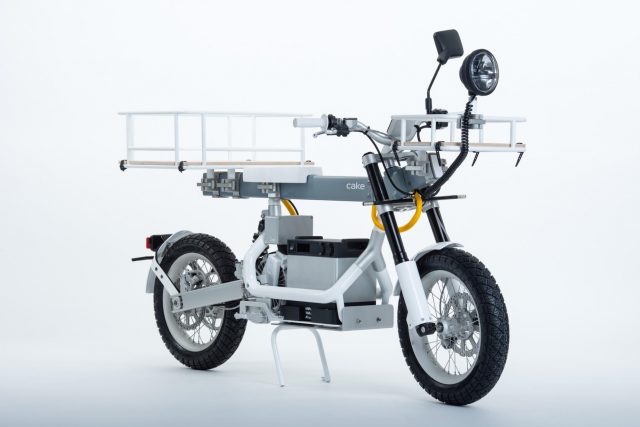Hello from somewhere between Venice and Florence, where a train delay has provided more time to sit and write up what I saw at CES. This is my first trip to Europe when I’ve had affordable cell data service (see “Google Fi Comes to the iPhone… Mostly,” 7 December 2021), which has been a boon as the public Wi-Fi all seem to be attached to 1996 AOL dial-up lines. But the difference in coffee shop culture from the United States to Italy is vast—standing up at a bar with a cappuccino does not lend to writing time, and if there’s a local equivalent where “Six hours with a laptop? No problem!” is in effect, I haven’t found it. Add to that a certain amount of feeling silly when cooped up in a hotel room all day, and writing time has been hard to come by.
Nevertheless, here are some of the most compelling products and announcements from the PEPCOM Digital Experience at CES.
1MORE True Wireless ANC Earbuds
I may not need a review unit of 1More’s True Wireless ANC In-Ear Headphones (active noise-canceling earbuds), but I certainly wanted a pair to make my upcoming 10-hour flight more tolerable. Dual microphones pick up unwanted noise (including those inside your ear) and, like all active noise cancellation, generate opposing sound frequencies to render the ambient sound silent to you. (Compare with “passive” noise cancellation, an industry term meaning “we block your ear so you don’t hear things.”) 1MORE claims that various technologies and acronyms, including THX certification, are built into the earbuds, ensuring sound tuned perfectly for iOS (and Android) devices. Bluetooth 5 lowers the power requirements, allowing for 6 hours of battery life, or 5 while using ANC, with total listening time at 22 hours after using all the charge in the case. A fast charge mode puts 2 more hours into the earbuds in 15 minutes. The case can be recharged with either USB-C or Qi wireless charging. The ANC is adjustable from 35 dB to 20 dB, to a passthrough mode allowing for ambient sound. (Decibels are a logarithmic scale. A plane in flight is around 80 dB, so you’ll still hear the plane, but a 35 dB reduction is roughly 90% quieter.) The earbuds cost $199 and are shipping later this week.
Altec Lansing Nano Pod and Evo Truly Wireless Earbuds

Meanwhile, Altec Lansing is covering the opposite end and middle of the price spectrum for earbuds, with its Nano Pod and Evo lines, for a total of four different headsets. The Evos are each a mix-and-match set of specifications: the Evo 2.0 has 7 hours of playtime, the Evo Sport has only 6 hours but boasts higher water resistance, and the Evo Glow…has glowing ear hooks. (“Be seen in the dark during any workout.” As if that were a thing I wanted to happen in the gym. But then again, I don’t run at night.) The Nano Pod earbuds are of more interest—as you might expect from the name, they are tiny and don’t protrude from your ears, explaining the 4-hour playtime before getting one of five more charges from the case. But they also cost only $39.99, while the Evo line will set you back up to $129.99. Two Evo sets are already shipping; the new ones will be available in a few months.
Aukey Gallium Nitride Universal Chargers
A charging brick is a prosaic gadget, but it still turns my head when I see one that looks sized for an iPhone but can pump out the wattage needed to charge a 16-inch MacBook Pro. The Aukey Omnia series is a range of gallium nitride (GaN) chargers that, by some trick of chemistry, magically provide more power delivery in a smaller size. You have to see GaN chargers to believe their size, especially compared to standard MacBook power bricks—the Omnia two-port MacBook charger would probably fit on a pack of cards with room to spare. Each charger in the Omnia series has one or two USB-C and USB-A ports, ranging in capacity up to 100 watts. Available Q2 2020, pricing not yet announced.
Linksys Wellness Pods Health Monitors
Ever since Belkin acquired both Linksys and Wemo, its tables at CES tend to be overfull of new releases, and it’s easy to miss things—which is why I failed to see the Linksys Wellness Pods in person. These give the CarePredict Senior Monitor (see “CES 2020: Flying Cars, Smart Pillows, and Virtual Dog Fences,” 16 January 2021) a run for its money. Unlike that wearable, Wellness Pods work with the mesh network generated by Linksys Velop Tri-Band nodes and manage to sample those radio waves 1500 times per second. So not only will it detect falls without anything needing to be worn, it can distinguish the type of fall between a slip and a medical issue. On the other hand, CarePredict makes additional claims to predictive AI that Linksys does not say its product has, so it may come down to an issue of competing features. The press release I have does not give pricing or release dates, but Gizmodo got more details: Linksys hasn’t yet set a price for the pods, which are due later this year, but the subscription service, called Linksys Aware, will cost $24.99 per year.
Cake Electric Motorbike
I have very little interest in getting on a motorcycle—the Lime electric scooter rentals scattered around Italy are already more exposure between my skin and moving asphalt than I’d prefer. But I think for some people the Cake line of electric motorbikes is likely the perfect serving size of Marie Antoinette. The one that’s allowed on US (and European) roads is somewhat annoyingly named the Kalk&—it was released last year and starts at $14,000. (Yes, Virginia, there is also a Kalk OR.) New at the show is the Ösa+ and the Ösa Lite, designed for “moped and off-road,” which I read to mean “not street legal.” The interesting bit about these vehicles is that they’re modular and can be custom-built with various fittings like cargo baskets, an extra passenger seat, and swappable batteries for extended range. On the default battery, the range is 70 miles at a top speed of 35 MPH. The Ösa line starts at $6500 and will be available in March 2020.
Endless OS and Hack Educational Tools
Ask someone who grew up with computers in the 1980s, and they’re likely to tell you that later computers became easier to use at the expense of requiring computer literacy when opening the box. Endless (the name of both the company and one of its products) is attempting to bring back the Eighties to some extent, albeit with a bewildering mix of products. The most intriguing of these is Endless OS, a modified version of Linux that’s available for free. Endless OS looks like a kid-friendly launcher with the usual selection of apps like Chrome and an office suite, including an extra app called Hack. Hack runs transparently over the operating system and provides an option to “flip the screen” on various processes. After an animation showing the “reverse side” of the screen, programming code is laid bare where the student can make changes to the code, flip back, and see it running—for example, making icons bigger or animating parts of the desktop. Of course, the full Linux source code isn’t there; instead, it’s a subset providing a great deal of flexibility but preventing anything vital from being broken. (I presume.) Endless OS and Hack are also available on a Hack Key for $39.95 (which appears to be a bootable thumb drive with Endless OS), or the $299.99 Hack Laptop, “the world’s only completely hackable computer,” an Asus laptop with Endless OS and Hack preinstalled. Endless says that this purchase is different than buying the same hardware and installing Endless OS yourself, but gives no indication how.
If that’s not confusing enough, Endless also sells games called Terminal Two and The Endless Mission—which at this point I thought were good descriptions of trying to understand its products. You play both games by modifying computer programs in-game (similar to CodeIllusion’s Disney game; see “CES 2020: Flying Cars, Smart Pillows, and Virtual Dog Fences,” 16 January 2021). These games can run on Endless OS but don’t require it; Terminal Two can run on PC, Mac, and the iPad, but The Endless Mission seems to run on only Endless OS and Windows.
JLab Go Air True Wireless Earbuds
JLab’s new entry into the earbud race is notable for several reasons, first and foremost being the $29.99 price. The Go Air True Wireless Earbuds come with features I haven’t seen at this price point before: independent usage of either earbud and a microphone in each. As usual, the earbuds recharge in the case, allowing for 5 hours of playtime and 15 hours of recharges. Less usual: the charging cable for the case is built-in, providing similar convenience to the MyCharge HubMax battery I reviewed positively (see “CES 2019 Reviews: iPhone/MacBook Battery, Mac Equalizer App, and AirPods Alternatives,” 12 August 2021). The JLab earbuds go on sale in March 2020. (I will be reviewing several pairs of cheaper earbuds later this year, and can report then whether they sound any good.)
Moshi Ten-Year Warranty
The biggest news out of Moshi, a computer accessories manufacturer, is the announcement that all of its products will now have a 10-year warranty that the company is applying retroactively to all past registered products. (We presume this does not apply to batteries or other peripherals that degrade naturally over time.) Moshi’s press release emphasizes that it is doing this for environmental reasons to prevent more products from ending up in landfills, but Moshi is also the kind of company that emphasizes that its products use vegan leather. That makes its new products worth a mention, although they’re not otherwise different from what else I’ve seen at the show. The IonGo 5K Duo battery (available mid-May, $70) has 5000 mA, built-in USB-C and Lightning cables, and is guaranteed to retain an 80% charge after 500 recharge cycles. The SnapTo (available now, $49.95) and Lounge Q (mid-April, $70) wireless chargers double as stands to hold a phone at a good viewing angle. The SnapTo sports a magnetic grip that doesn’t interfere with electronics, while the Lounge Q sports Scandanavian design and 50% more power delivery (15 watts versus 10).
Netgear Wi-Fi 6 and 5G Routers
Netgear wants you to know that various new technologies are just about here, and it’s time to upgrade all of your networking hardware. The company claims to be first to market with a combination of products that will connect you properly to Wi-Fi 6 at home (see “Wi-Fi Switches from Obscure Protocol Names to Simple Generation Numbers,” 5 October 2021), and 5G on the go. The Nighthawk Mesh WiFi system sets itself up as a base station and repeater automatically, with a phone app to manage the rest of the setup. The router can handle up to 1.8 Gbps wirelessly (and includes a 2.5 Gbps Ethernet port, a speed Comcast has said it will reach this year), with a Gigabit Ethernet port on each extender for wired connections there as well. A boxed set with one of each ships this month for $229.99; later in Q1, Netgear will ship additional extenders ($149.99), boxed sets with two extenders, and a standalone router that looks like a cross between a Star Wars A-wing and a Cylon raider (pricing TBA). Wi-Fi 6 is also featured in the Nighthawk MR5200 Mobile Router, which gets its bandwidth from a 5G connection; pricing will be announced when it ships in the second half of 2020, but the real question will be the cost of the 5G bandwidth (see “Ideas from CES 2017: 5G in Your Future,” 19 January 2021).
Ovis Robotic Suitcase
If you want a friend in Washington, get a dog. If you want a friend in an airport, get a robot suitcase. The Ovis by ForwardX is a carry-on suitcase that, before you nest it away in the overhead, follows you around the airport and intelligently gets out of the way of passengers and obstacles. A wristband alerts you if it’s more than 6 feet away. Switch it briefly to manual mode for traversing stairs and escalators. The removable battery can run for 4 hours or 13 miles, or it can give up some charge via USB ports. It’s available for pre-order now for $799, but the company hasn’t announced a shipping date.
Having just been through a few airports, I like the idea, but my question: airports are not known for a light and humorous approach to the new and novel. If your suitcase trails four feet behind you, is it obvious to the twitchy security guard that it’s accompanied, and not just steering itself to where it can do the most damage?
Western Digital’s Really Big Portable Storage
After nearly stealing their prototype two years ago (see “CES 2018: PEPCOM Digital Experience,” 11 January 2021), I’d probably be covering Western Digital out of guilt even if I weren’t impressed with the company’s upcoming SanDisk products, both of them more capacious versions of previously available products. The SanDisk Dual Drive Luxe is a dual USB-C and USB-A stick that boasts up to 1 TB in storage, due out sometime this quarter with an unannounced price. Meanwhile, still in prototype but coming down the pike is SanDisk’s portable 8 TB SSD with a USB 3 transfer speed of 20 Gbps. Sure, faster and bigger are predictable in storage, but still, that’s an insane amount of solid-state storage to throw in your pocket.







